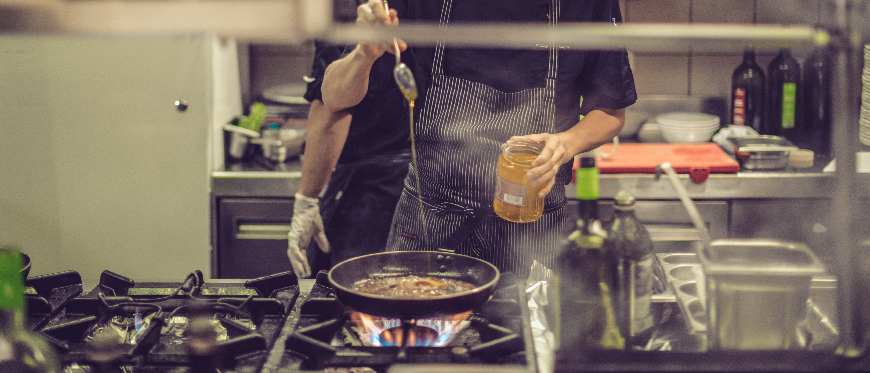If you Google the phrase “how to optimize kitchen flow” you’ll come up with millions of results, the most prominent of which are all about kitchen design, floor planning, process efficiency, technology use and the like. But a recent experiment by kitchen optimization consultant Alan Kinsella revealed the power of a low-tech (but high-return) investment for improving kitchen flow: improved kitchen hygiene.
A system for optimizing the flow in a commercial kitchen
Kinsella promotes what he calls the C.H.E.F.S. system for optimizing kitchen operations. It stands for “Control, Hygiene (and tools), Engineering, Finance and Systems.” And while restaurant operators seem naturally inclined to providing the necessities of Control (via good kitchen design), Engineering (via efficient processes), Finance (as in the right balance of quality and cost) and Systems (the adoption of helpful technologies, to keep things moving and reduce waste), there is a less natural bent toward including Hygiene as a core competency for achieving optimal efficiency in a commercial kitchen.
Yes, most restauranteurs can agree on the need for hygiene, but they too frequently view it as an after-the-fact, clean up the kitchen concern. However, Kinsella identified the opportunity for an uncommon boost in efficiency by including hygiene as a key consideration in the planning, design and equipping of a kitchen. In his research he identified significant hygiene-related issues that could slow or disrupt kitchen operations – unemptied waste bins, empty paper towel dispensers, the clutter of cloth rags and the inaccessibility (or absence) of cleansers, soaps and hand sanitizers.
He was convinced that a disciplined approach to hygiene could improve flow as much as it ensured cleanliness – so he transformed a working kitchen with the latest in hygiene supplies and dispensers, to test out his conviction.
Recommendations for enhancing kitchen flow via hygienic improvements
The experiment, which had an immediate impact on efficiency, revealed that kitchen flow could indeed be improved by better hygiene, if the following principles are observed:
1. Reboot your kitchen with a new eye toward clean
You don’t necessarily need to redesign your kitchen, but you do need to reimagine how hygiene fits in. Start your reboot by taking a tour of your kitchen with a super-critical eye.
Those always-full waste bins? They’re not just an eyesore (and a magnet for pests and health department citations); they’re also a literal stumbling block to efficient operation. Those cleaning rags that hang around for all-day use? They’re really just “recontamination rags,” transferring unwanted liquids, particles and germs between kitchen surfaces and employee hands.
2. Make the placement of hygiene products part of your kitchen design strategy
Upgrading from those cloth rags to disposable kitchen wipes can cure much of the clutter and cross-contamination problem, but only if the wipes get used. Make sure the products you select, from paper towels and wipers to hand soaps and sanitizers, come in wall-mountable dispensers, keeping them in sight and within easy reach.
3. Remember that good ergonomics is a matter of both placement and product choice
Ergonomics related to kitchen flow often concentrate on keeping tools and equipment “in the flow,” set up in the same direction as you’re working and facing you. However, product design, from the shape of your knife handles to the ease with which paper towels can be removed from those wall-mounted dispensers, must always be taken into consideration. Having to reach too far for soap or pull too hard to get a wiper will not only stress your workers’ bodies, it may even discourage them from using hygiene products at all.
As Kinsella discovered, kitchen hygiene is not just a matter of clean. It’s a secret weapon for optimizing your kitchen flow.
Sources:
Tork: Kitchen flow research
